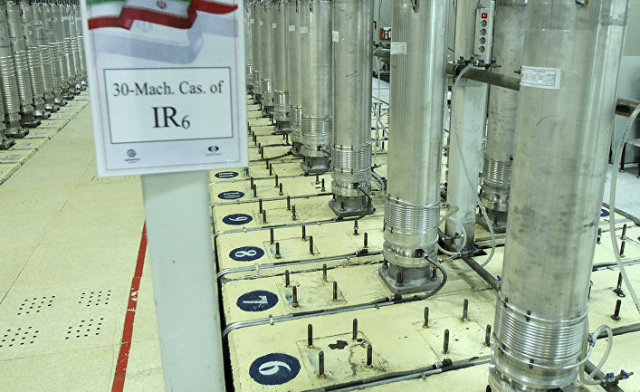The IAEA is sounding the alarm because of the rapid acceleration of Iran's uranium enrichment process. After reports emerged in April that Iran had raised its enrichment level to 60%, new data from the Natanz plant suggests that Tehran is on the verge of developing a nuclear weapon.
The International Atomic Energy Agency (IAEA) said that Iran has accelerated the process of uranium enrichment - it is close to the level necessary to create a nuclear weapon.
This increases tensions between Iran and the West, as both sides seek to resume negotiations to restore the nuclear deal.
According to a Reuters report, Iran has raised the level of uranium enrichment from 20% to 60%, and for the production of a nuclear bomb, it needs to increase uranium enrichment to 90%.
The Director General of the IAEA, Rafael Grossi, recently announced that Tehran has started production of uranium fluoride (UF6), enriched to the level of 60% at the Natanz plant.
According to the IAEA, Iran has launched a second cascade of advanced centrifuges at the nuclear facility, which allowed it to significantly increase the level of enrichment of metallic uranium.
In April, Iran raised the level of uranium enrichment from 20% to 60%, which is much higher than the level of 3.67% stipulated by the nuclear deal.
Iran, which has long denied trying to build a nuclear bomb, has refused to fulfill its obligations under the JCPOA since the US withdrew from this agreement in 2018.
The agreement has been under threat since former US President Donald Trump unilaterally withdrew from it and imposed new sanctions against Tehran.
US President Joe Biden is seeking to return to the nuclear agreement with Tehran. Indirect talks between Iran and the United States started in Vienna in April with the mediation of European states.
But the last session, held on June 20, did not bring tangible progress.
The European Union has declared its readiness to resume negotiations in early September, but the new Iranian president, Ibrahim Raisi, insists on the lifting of US sanctions that are stifling his country's economy.
On Monday, August 16, the United States expressed concern about the recent statement by the IAEA that Iran has made progress in working on enriched uranium metal, calling on Tehran to return to the negotiating table.
According to the IAEA, Iran has produced 200 grams of metallic uranium with an enrichment level of up to 20%, allegedly for research purposes, but it can also be used for the production of nuclear weapons.
The US State Department indicated that the United States has read the latest report prepared by members of the International Atomic Energy Agency and believes that Iran "does not have a real need for the production of metallic uranium."
In December 2020, Iran began implementing the law on the "Strategic Action Plan for the lifting of sanctions", which allowed it to step up its nuclear activities.
On February 21, 2021, Iran and the International Atomic Energy Agency signed a temporary three-month agreement during the visit of IAEA Director General Rafael Grossi to Tehran, that is, two days before the law on suspending the application of the additional protocol to the safeguards agreement with the organization came into force in the republic.

